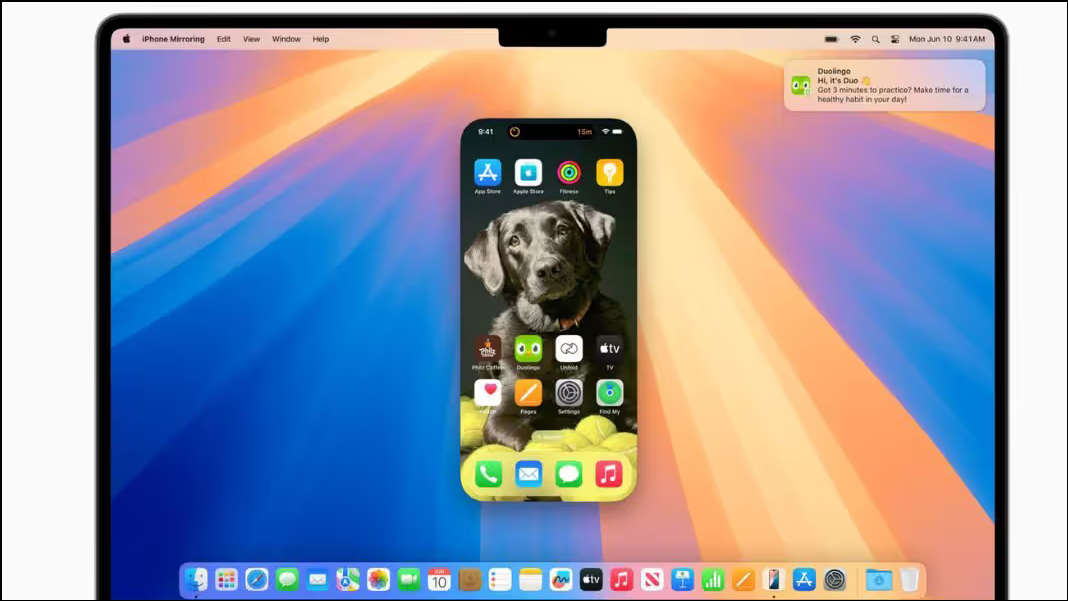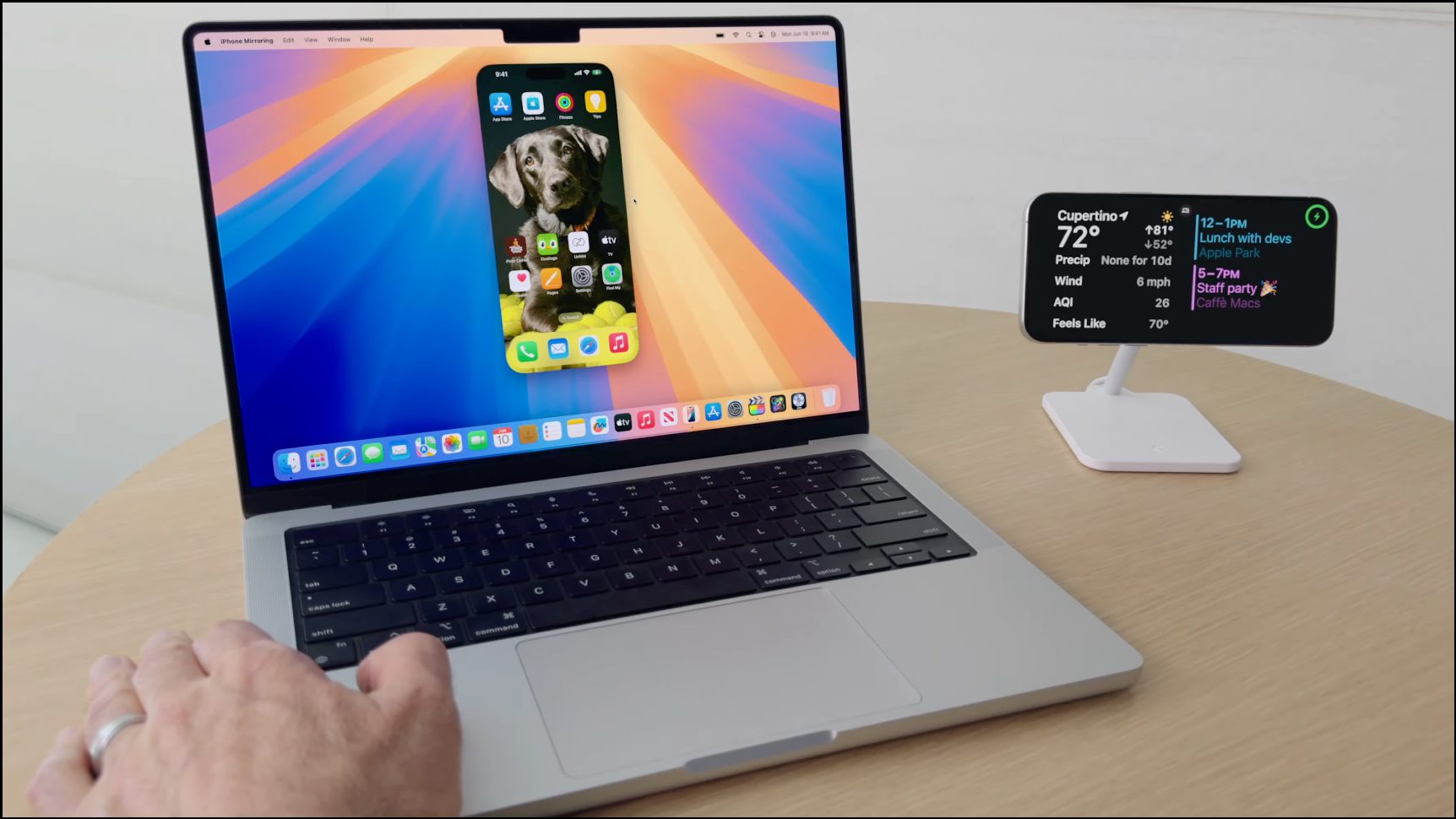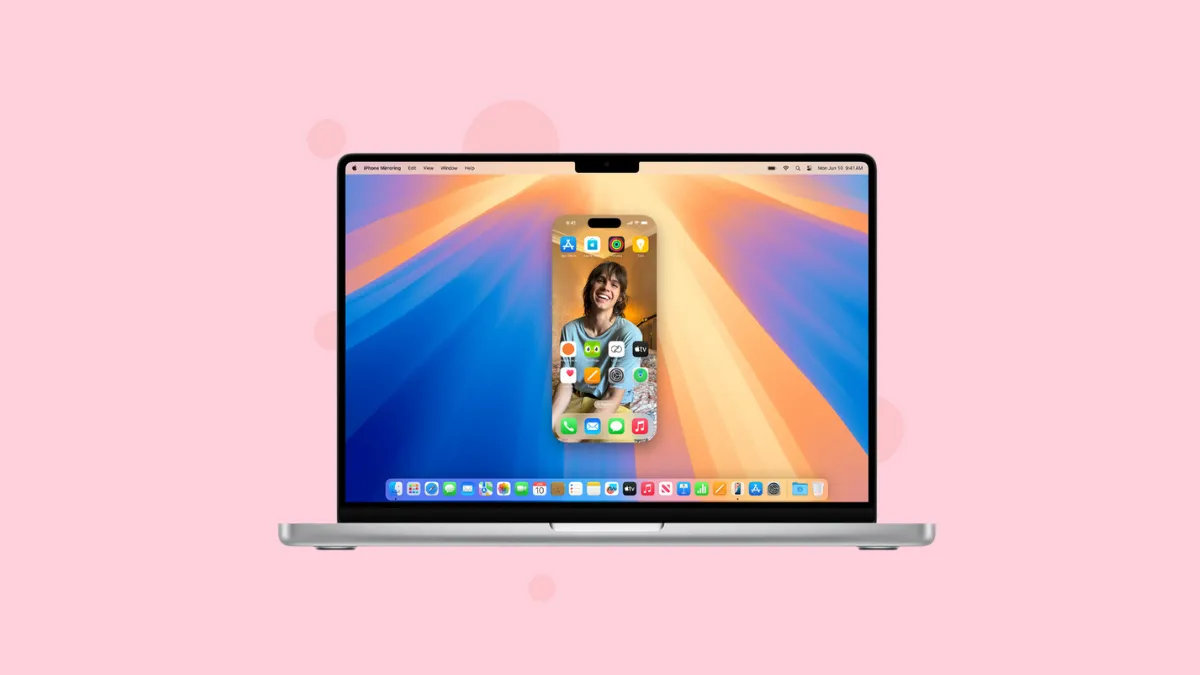Like every year, Apple announced updates for its portfolio of devices, including its iPhones, iPads, and Macs at its annual Worldwide Developers Conference (WWDC) in California. The company unveiled several exciting features coming to the newly announced iOS 18, iPadOS 18, and macOS 15 Sequoia.
While iOS 18 is finally adding more customization options to iPhones, and iPadOS 18 will bring a calculator app to Apple's tablets, the most interesting feature was perhaps macOS 15's iPhone Mirroring. As you may have guessed, macOS Sequoia will let you mirror your iPhone's screen on your Mac and easily control your iPhone remotely. We've covered everything about this feature here in this guide.

What is macOS Sequoia's iPhone Mirroring?
macOS Sequoia's iPhone Mirroring feature relies on Wi-Fi and Bluetooth connectivity along with Apple's Continuity feature to mirror your iPhone's screen on your Mac. Once your iPhone's screen appears on your Mac, complete with its custom wallpaper and apps, you will have full control over it and can interact with it using your keyboard, mouse, and trackpad.
This means you can use your iPhone and Mac apps side-by-side, which can be great for purposes like video and photo editing, where you can easily edit photos and videos shot from your iPhone on your Mac. It even supports gestures like pinch to zoom, lets you hear your iPhone's audio on your Mac, and you can even transfer files between the two devices.
With iPhone Mirroring, you can also use your iPhone apps on your Mac and view your notifications on the bigger screen as well. You can swipe between different pages of your iPhone home screen and access all the data from that device on your Mac. While the feature may appear similar to Phone Link available on Windows for Android users, it is much more deeply integrated with the hardware and software in the case of Apple.
What is most impressive about the iPhone Mirroring feature is that you can seamlessly transfer files from your iPhone to your Mac and vice versa just by dragging and dropping them. When you perform such actions, your iPhone will remain locked, so no one else can access it or view what you are doing.
iPhone Mirroring works exceptionally well with Standby; your iPhone will continue to be in StandBy even when you access it on your Mac with iPhone Mirroring and can provide information with a quick glance.

Pre-requisites. iPhone Mirroring will be available on Mac computers with Apple silicon and Intel-based Mac computers with a T2 Security Chip. Your iPhone and Mac should be signed in with the same Apple ID with two-factor authentication enabled, they should be near each other and have Bluetooth and Wi-Fi turned on. Your Mac should also not be using AirPlay or Sidecar for the feature to work.
Here are a few more details about this feature that can help you get a better idea of what it has to offer.
Your iPhone does not have to be next to your Mac
The iPhone Mirroring feature does not require your iPhone to be next to your Mac for it to work. In fact, so long as the connection between the two devices is active, you can even leave your iPhone in another room while accessing it on your Mac. If your iPhone is in StandBy mode, you can access it via Continuity, which will keep it in that mode, allowing useful information to still be visible on its screen.
Control iPhone app notifications on your Mac
If you get a lot of notifications on your iPhone and do not wish to be disturbed when working on your Mac, you're going to love iPhone Mirroring. As mentioned before, you can view notifications that appear on your iPhone directly on your Mac. In addition, you can choose the apps that show notifications on your Mac and even turn them off.
Also, users do not need to be using the iPhone Mirroring feature to get notifications. When you click on an iPhone notification, it will automatically launch iPhone Mirroring on your Mac. Additionally, for the apps you choose that will show notifications on your Mac, the feature is smart enough to not show those same notifications on your iPhone too, so you don't have to deal with them twice.
Play iOS games on your Mac
Everybody knows that if there's one area where macOS lags behind Windows, it is gaming. While the number of games available on the platform is increasing slowly and steadily, it is still negligible in comparison to what is available on its rival from Microsoft. However, when it comes to mobile platforms, iOS has a huge library of games that you can enjoy on your iPhone.
With iPhone Mirroring, you can now enjoy these games on the larger screen of your Mac computer. The feature also supports frame rates up to 60 FPS, so you can rest assured your games will run smoothly, delivering an enjoyable experience. When you launch a game in iPhone Mirroring mode, your iPhone will switch its orientation from portrait to landscape mode automatically on your Mac.
Drag and drop files between your iPhone and Mac
If you need to transfer files, photos, or audio between different Apple devices, you can easily do so using AirDrop. However, with the iPhone Mirroring feature, Apple has made transferring files even easier. Now you can just drag and drop files into different apps like Pages and Finder to open them on the other device.
Does not work with all apps
You can use the Screen Mirroring feature to interact with your iPhone apps on your Mac but it will not work with all apps. For instance, apps with DRM restrictions with Apple AirPlay, like Disney Plus and Netflix, will not work in this mode. So, if you're thinking you can stream your favorite series from your iPhone to your Mac, that won't be possible.
Your iPhone remains locked
We mentioned above that your iPhone remains locked while you use the iPhone Mirroring feature, so no one else can access it. And if it is close to you, you can still use StandBy mode to interact with it. Additionally, you can choose to set up a password that will be required every time you use iPhone Mirroring, though this is turned off by default.
Dedicated controls are available
When you turn on iPhone Mirroring, you will find dedicated buttons for switching apps and returning to the home screen built into the interface. You can use these to interact with your device or use your keyboard to type and your mouse or trackpad to swipe and tap as needed.
You can enlarge the mirrored screen
Apple has not revealed the exact sizes yet, but iPhone Mirroring will let you enlarge the mirrored window of your iPhone screen on your Mac. This can be very handy and add to the overall experience when reviewing or editing photos, streaming videos, or playing games. You can resize the window as you see fit, depending on which apps you want to use.
Ending a session is easy
When you're done transferring files or playing iOS games on your Mac, you can simply pick up and unlock your iPhone to end the iPhone Mirroring session. There are no complicated controls you need to deal with to turn the feature off.
With iPhone Mirroring, Apple aims to bring the iPhone and Mac even more closer together. By allowing users to control their iPhones and access their iOS apps on Mac, the company is simplifying things like file transfers, further strengthening its ecosystem. For someone owning a Mac, this is yet another reason to invest in an iPhone rather than an Android device.
If you're wondering when will the feature be available, it will arrive later this year with the public release of macOS 15. Though macOS 15 Sequoia is available in a Developer Beta right now, the feature hasn't shipped with the first version.


